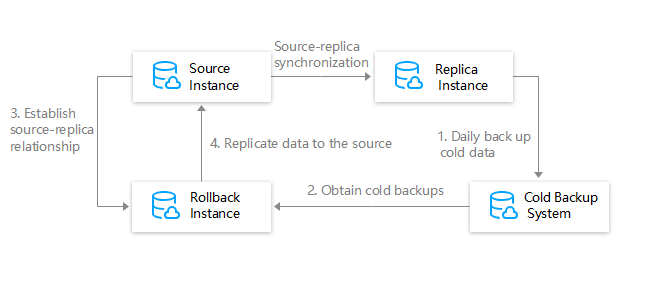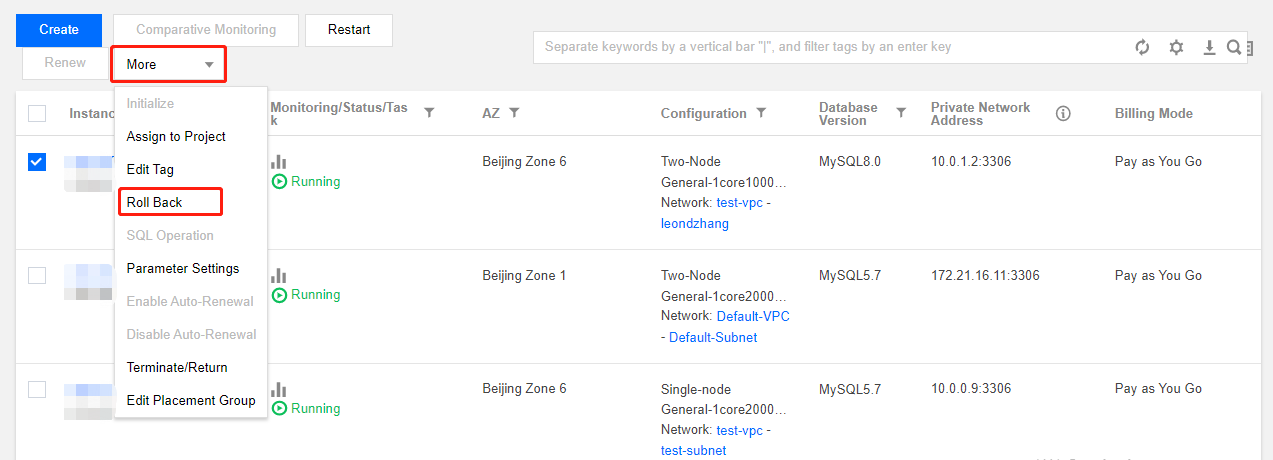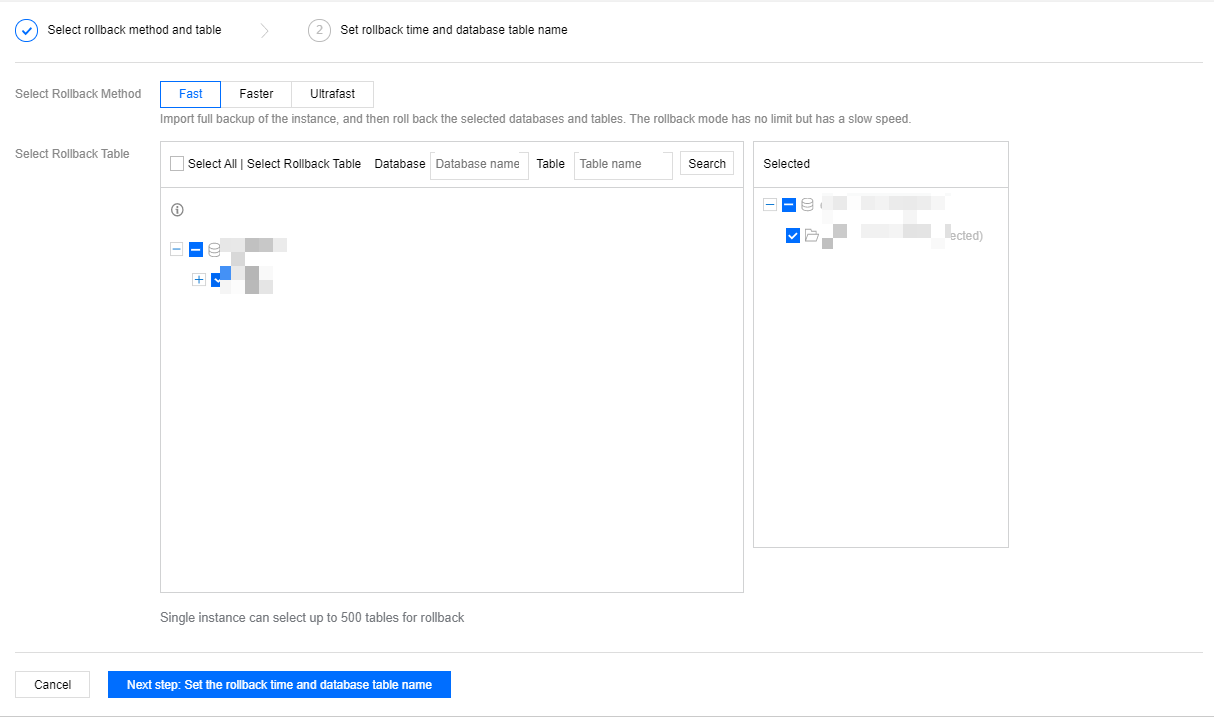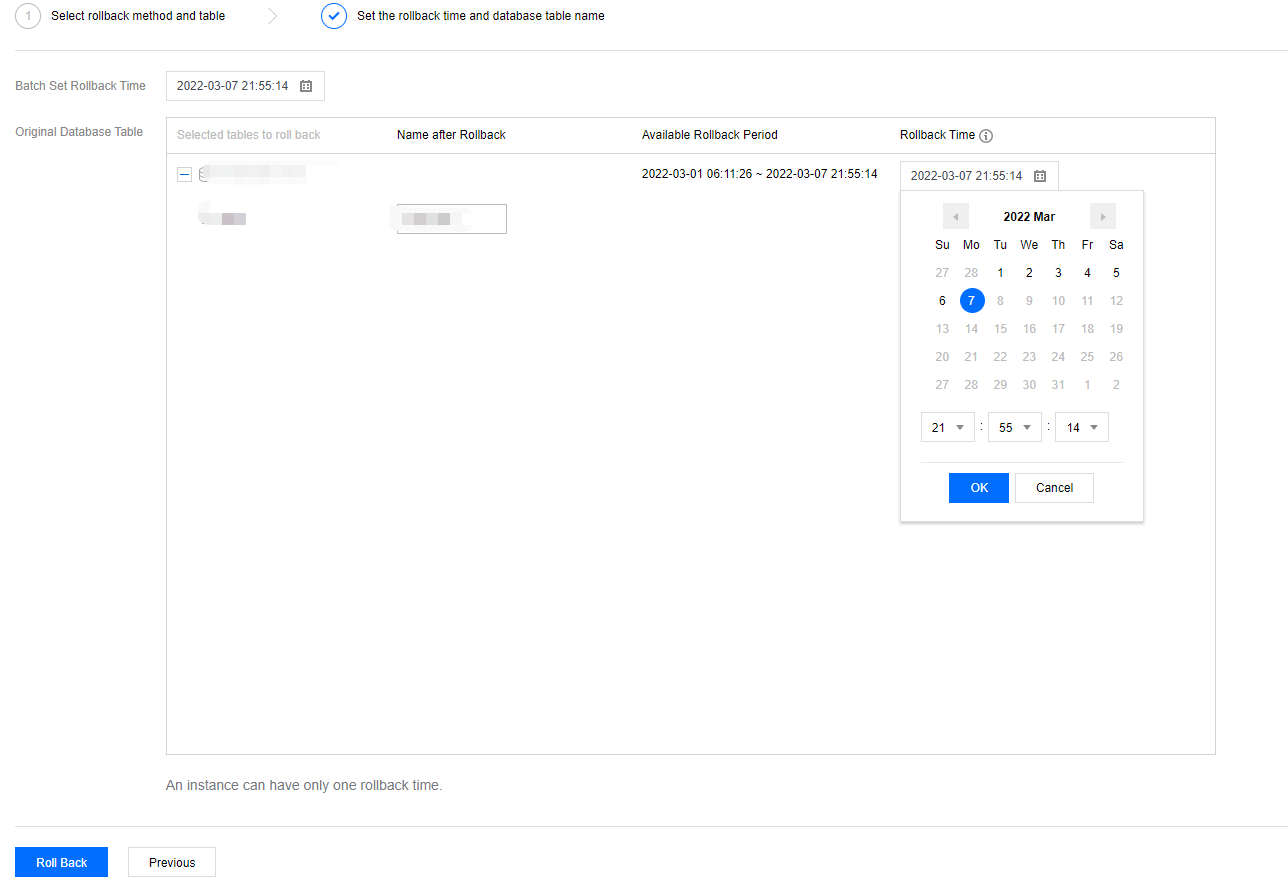Rolling back Databases
Last updated: 2025-06-10 10:18:39
Overview
TencentDB for MySQL will not modify any of your data. Data corrupted due to personal reasons can be recovered through rollback in a self-service manner. A rollback feature is provided to roll back databases or tables in Tencent Cloud based on data backup and binlog backup. Real-time data rollback is supported.
By reconstructing periodical images and real-time transactions, the TencentDB for MySQL rollback feature can roll back a database or table to the specified point in time, and the time slices of all data are guaranteed to be identical. A new database or table will be generated in the original instance, and during the process, the original database or table can be accessed normally. Upon the completion of rollback, you can see both the new and original databases or tables.
How Rollback Works
The rollback feature can roll back databases or tables to a specified point in time based on
cold data backup and corresponding binlog backup.
1. Data is exported from the MySQL replica and imported to the cold backup system daily.
2. To roll back databases or tables, request for a temp rollback instance from the rollback system. Export the cold data from the cold backup system and import it to the temp rollback instance (types of imported data vary by rollback method).
3. Establish a source-replica relationship between the rollback instance and MySQL source instance, set the rollback time, and specify the databases or tables to be rolled back.
4. Replicate the rollback databases or tables to the MySQL source instance.
Feature Limits
Single-node instances of the cloud disk edition cannot be rolled back.
Only source instances can be rolled back. Read-only instances and disaster recovery instances cannot be rolled back.
Only specified databases or tables can be rolled back. The databases or tables after rollback will be renamed and replicated to the source instance.
MySQL 5.6, 5.7, and 8.0 support rollback, while MySQL 5.5 does not support rollback. If you are using MySQL 5.5, we recommend that you upgrade it to a later version as soon as possible. For details, see Upgrading Database Engine Versions.
For database-level rollback, the following object types will not be imported: foreign key constraint, check constraint, trigger, stored procedure, user view, and event.
Note
The rollback feature is subject to the backup cycle and retention days set for automatic backup. It enables data rollback based on data backup and binlog backup according to the configured retention days and backup cycle. For the backup cycle settings, see Backing up Databases. To ensure MySQL data security, set the automatic backup cycle to at least twice a week.
If a monthly subscribed instance has not expired but your account has overdue payments, the backup service will be downgraded with rollback disabled. If you need to roll it back, top up your account to a positive balance.
If the database or table to be rolled back does not exist or has been dropped, you need to log in to the TencentDB instance and create one first before performing rollback in the console.
If the cold backup before rollback does not contain the table, the rollback will fail.
Directions
1. Log in to the TencentDB for MySQL console, select one or multiple target instances in the instance list, and select More > Roll Back.
Note:
If rollback is to be performed on only one instance, you can also go to the instance management page and click Roll Back in the top-right corner.
Up to 5 rollback tasks can be initiated at a time under the same APPID.

2. On the rollback page, select the original database or table and click Next: set the rollback time and database table name.
Rollback methods:
Fast mode: Import full backup of the instance, and then roll back the selected databases and tables. This rollback mode is slower than the other modes but has no limit.
Faster mode: Full backup + database-level binlog. For cross-database operation, if associated database is not selected at the same time, the database callback will fail.
Ultrafast mode: Full backup + table-level binlog. For cross-table operation, if associated table is not selected at the same time, the table rollback will fail.
Note:
Only databases/tables with names containing digits, letters, underscores, or their combinations can be rolled back. Databases/tables with names containing special symbols are not supported.
In the mode where specified databases/tables can be rolled back only, a maximum of 500 databases/tables in the same instance can be rolled back at a time.
If the rollback involves composite operations on other databases or tables during the execution of binlogs, the SQL statements may fail.
If the rollback involves foreign keys and other constraints of the table during the execution of binlogs, the SQL statements may fail.

3. Set the post-rollback database or table names and rollback time, and then click Roll Back.
Note:
Only one rollback time can be set for each instance.
If you choose to set a batch rollback time, all databases or tables will be rolled back at the specified time.
If you choose to set a single-table rollback time, tables will be rolled back at their respective rollback time.
The database or table name after rollback can contain up to 64 letters, digits, or symbols (.-_$).

4. After submission, go to Operation Log > Rollback Log and view the rollback progress. Click View Details to view the rollback log in real time.
5. Once the rollback is completed, go to Database Management > Database List to view the new databases or tables after rollback in the original instance.
Was this page helpful?
You can also Contact Sales or Submit a Ticket for help.
Yes
No
Feedback

